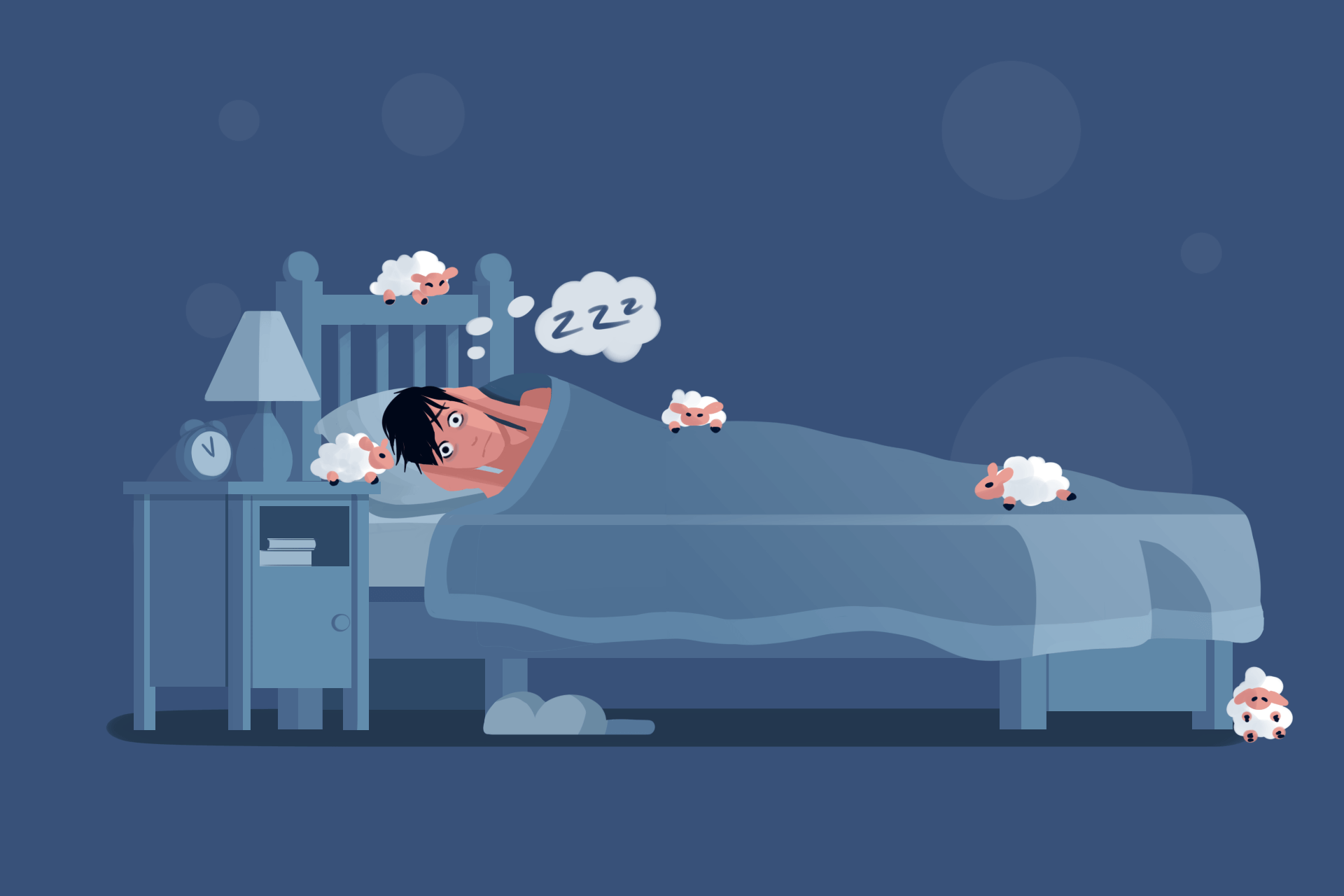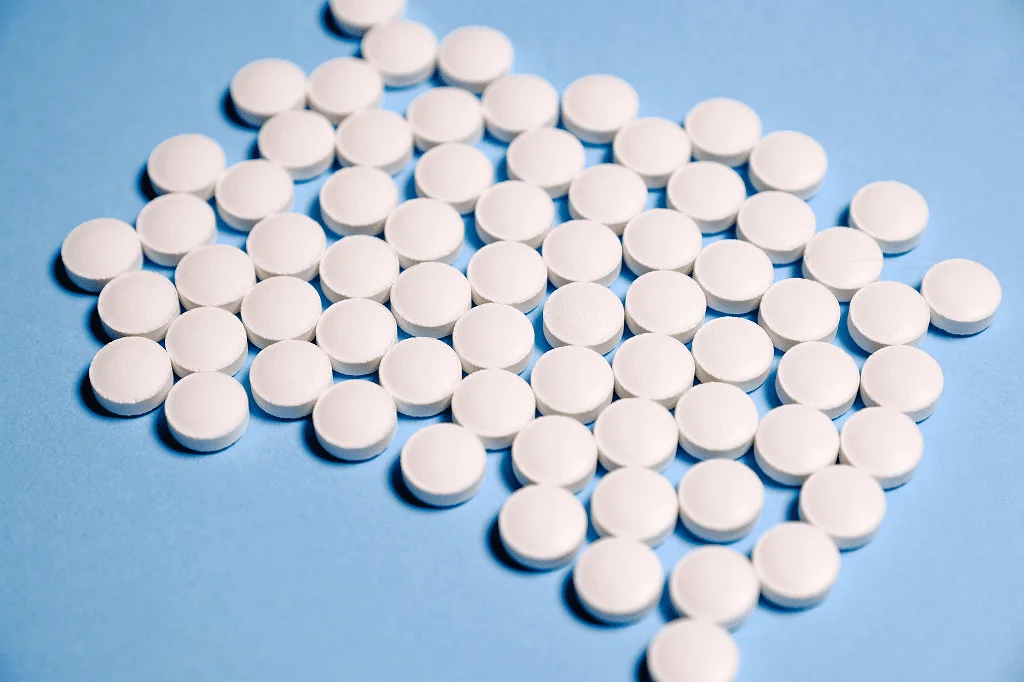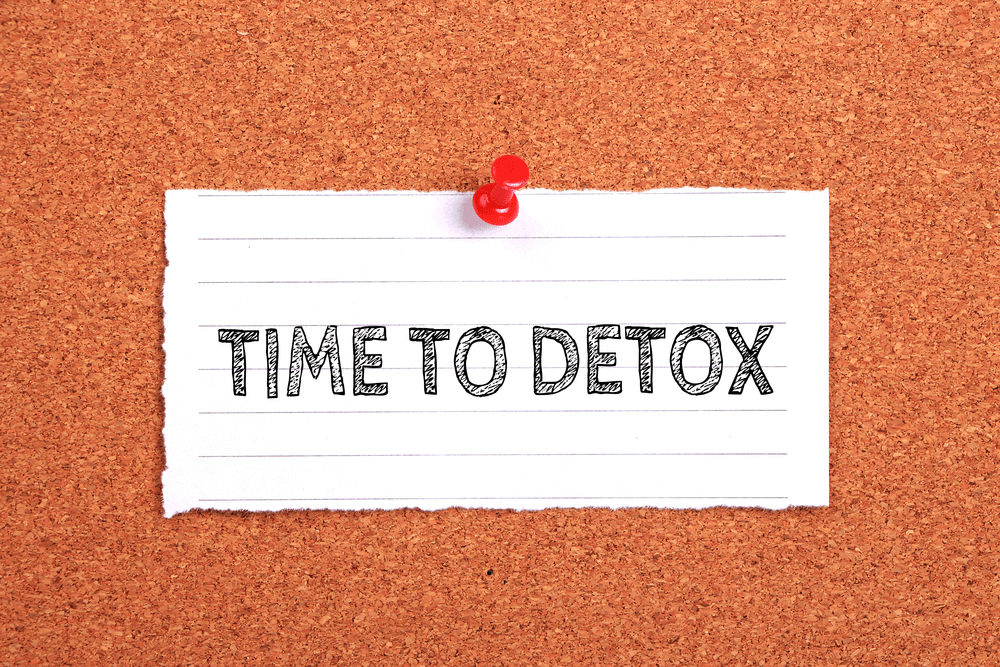Modafinil is available by prescription, but there is a growing problem of its abuse because it has addictive potential. Drug abuse and addiction affect the lives of many people, including friends and family members of those who abuse meds. Keep reading to learn more about this issue and how to avoid it.
What Is Modafinil?
Modafinil is the generic name for the drug Provigil. It was initially approved by the Food and Drug Administration (FDA) in 1998 and is primarily prescribed to treat daytime sleepiness caused by the following disorders:
- narcolepsy;
- obstructive sleep apnea (OSA);
- shift work sleep disorder (SWSD).
People with narcolepsy may fall asleep at inappropriate times, with symptoms including excessive sleepiness, sleep paralysis, hallucinations, and sleep attacks with a sudden loss of muscle control.
OSA is a condition where people stop breathing for short periods while they are sleeping. The sudden lack of oxygen triggers the brain to wake up but without the person realizing it. The effect is that the quality of sleep for people with this condition is low.
Those with SWSD work nontraditional hours, which interferes with regular sleep patterns. They may experience excessive drowsiness and non-refreshing sleep.
Off-Label Use of Modafinil
Modafinil was original approved to treat narcolepsy, but it has several other off-label uses, including:
- сancer-related fatigue;
- major depressive disorder (in addition to antidepressants);
- multiple-sclerosis related fatigue;
- Parkinson’s disease-related fatigue.
A study [1] in theJournal of the American Medical Association(JAMA) attempted to discover how physicians were prescribing modafinil. In addition to the off-label indications listed above, they also prescribe it for attention deficit hyperactivity disorder (ADHD) and schizophrenia.
The study also found that in the period between 2002–2009, modafinil prescribing increased by ten times. The physicians most likely to prescribe it were psychiatrists and neurologists. Interestingly, the majority of modafinil prescriptions are written for off-label reasons.
The “Smart Drug”
Modafinil is a central nervous system (CNS) stimulant. It works by increasing the amount of dopamine in brain cells. Dopamine is a neurotransmitter, which is a type of molecule that neurons use to communicate with each other.
Some believe that modafinil enhances cognitive ability, but research shows this is not the case. A study [2] in 2005 found that this nootropic can increase verbal recall and visual short-term memory; these benefits do not extend to long-term memory or cognitive function.
Even though modafinil does not improve cognition, the myth has increased its abuse potential.
Can I Take Modafinil with Other Medicines?
Modafinil may interact with both over-the-counter (OTC) and prescription medications. Some of the most common drug-drug interactions may include [3]:
|
|
There are many more drugs that interact with modafinil that are not included in this list. Speak with your physician or your pharmacist if you have questions that are related to the medicines you are taking.
Many medications are metabolized by enzymes produced in the liver. Drug interactions happen because certain drugs can increase or decrease the amount of these metabolic enzymes. For example, if a medicine decreases the enzymes that metabolize modafinil, then too much will be in the blood and it can be toxic. Conversely, if a drug increases these enzymes, then too little will be in the body, and modafinil will not be effective.
Similar Medications
Modafinil is a drug that increases energy levels and improves alertness. More specifically, this type of medications is called eugeroics. Many similar pharmaceuticals can be prescribed to treat narcolepsy or other sleep disorders.
Modafinil vs. Armodafinil
Modafinil is a drug that has both “left-handed” and “right-handed” molecules. This characteristic is called a racemic mixture, and usually, one “hand” is more potent than the other.
Armodafinil (marketed as Nuvigil) contains only the “right-handed” molecule, so effectively, it is twice as potent. The standard dosage of modafinil is between 100–400 mg per day, depending on what is being treated. Armodafinil can be given at half the dose. Read more information in the guide Modafinil vs. Armodafinil: What Exactly is the Difference?
Modafinil vs. Adrafinil
Adrafinil was initially developed in France as the prescription medication Olmifon. It was discontinued in 2011 but remains available online as a “nootropic agent.”
When adrafinil is taken, it is converted to modafinil in the body. Because it must be converted to be active, it takes longer to start working than modafinil. Both of these drugs are banned by the World Anti-Doping Agency because they can enhance performance during sporting events. However, adrafinil has not been regulated by most countries and is still widely available over the Internet without a prescription. Find out more in our article Modafinil vs. Adrafinil: Here’s Why You Should Avoid Adrafinil.
Adderall vs. Provigil
Adderall is the brand name for amphetamine salts. It is also a CNS stimulant but belongs to a different class of medications than modafinil. It is also recognized as more addictive than the latter.
Adderall is approved to treat ADHD, while modafinil is prescribed off-label for this condition. The drug is made as both immediate-release (IR) and also as an extended-release (XR) formulation. It is usually less expensive than modafinil.
Adderall is a Schedule 2 drug, so it has high abuse potential and addiction potential, while Provigil is a Schedule 4 drug with a lower potential for abuse.
More comparative information in our guide Generic Modafinil vs. Provigil: Why I Prefer Generics.
Modafinil Precautions and Side Effects
People who take modafinil should use caution when they operate vehicles or perform other tasks that require alertness. The effects of the drug are different for each person, and someone prescribed with this nootropic should take it for a few days before engaging in this type of activity.
Since it is a controlled medication, sharing it with or selling it to other people is a crime.
Store modafinil in a location that cannot be accessed by children. It should not be stored in humid environments like a bathroom or kitchen.
If you are taking modafinil and become pregnant, tell your doctor. There is an increased risk of spontaneous abortion and birth defects. The eugeroic passes through breast milk and should not be taken while breastfeeding.
Some of the common side effects that occur while taking modafinil may include:
|
|
Also, modafinil can cause severe skin reactions like Stevens-Johnson syndrome, toxic epidermal necrolysis, and drug rash with eosinophilia and systemic symptoms (DRESS).
Explore the full information in the article Modafinil Side Effects & How to Avoid Them.
Take this medication exactly as prescribed by the doctor!
Prescription Stimulant Abuse: Pervasive Problem
Prescription drug abuse is a major public health issue in the United States. Most people take their tabs as directed by their doctor. However, according to the National Institute on Drug Abuse (NIDA) [4], in 2017, an estimated 18 million people (more than 6% of people aged 12 or older in the US) have abused prescription medications at least once in the past year.
The age group with the highest misuse of such meds is 18–25 years, with 14.4% reporting nonmedical use of prescription drugs.
Many people associate abuse and addiction with illegal substances. However, Americans struggle with addiction to all sorts of substances, including alcohol, prescription drugs, nootropics, and others.
As we have seen with the opioid epidemic [9], drug abuse behavior often starts in the medicine cabinet. Legal prescriptions can have abuse and addiction potential. Sometimes a person becomes addicted to their tabs after prolonged abuse.
Prescription abuse is common for several reasons, including over-prescribing, ease of access, and the false belief that all prescriptions are safe. Rx stimulants have very high abuse potential because they impact the reward systems of the brain. The rate of prescriptions for many abusable medications has increased four times since the 1990s.
Commonly prescribed stimulants include:
- dextroamphetamine (Dexedrine®);
- dextroamphetamine/amphetamine (Adderall®);
- methylphenidate (Ritalin®, Concerta®).
Stimulant abuse is a problem that affects not only adults but also adolescents. NIDA data show that approximately 4.9% of people between 12 and 17 years of age reported using prescription drugs for nonmedical purposes in 2016.
Some slang terms for stimulant drugs may include:
|
|
Taking a prescription drug in a way other than prescribed is drug abuse. Rx stimulants are only available in formulations that are taken by mouth, including solid and liquid ones.
Common methods of stimulant drug abuse include:
- injection;
- smoking;
- snorting.
Smoking and injection generally yield the effects fastest, while swallowing and snorting are slower at producing the desired high.
Drug abuse is a risk factor for addiction. Taking medicine by any of the above-listed methods is more likely to lead to this disease.
Stimulant abuse can cause serious side effects like heart attack, stroke, and seizure, which are all potentially fatal. Other signs of a prescription stimulant overdose may include:
|
|
Never self-medicate, as this can lead to irreversible health consequences!
Modafinil Abuse Potential
As mentioned earlier, modafinil is a Schedule 4 controlled medication [3], meaning it has the low potential for abuse and addiction.
While modafinil is not as common as Adderall in academic settings, students often report abusing it to improve their performance. The increasingly competitive nature of education and costs help to fuel these competitive addictions. Since schools are unlikely to reverse this trend anytime soon, organizations like NIDA are essential to help educate the public on the dangers of prescription drug abuse.
Some of the common reasons people may start abusing modafinil include:
|
|
Modafinil abuse and dependence are rare but have been reported in the medical literature. In 2015, a case [5] was reported where a 44-year-old man became physically dependent on modafinil. He gradually increased his dose to 100 mg per hour with a total of 1200 mg/day. He had trouble stopping the drug and experienced sleepiness, hand tremors, anxiety, and poor sleep when he was not taking it.
His treatment team gradually decreased his dose by 100 mg every two to three days. The tapering process took about one month, and he experienced withdrawal symptoms during that time.
The Effects of Modafinil Abuse
Modafinil is a relatively new drug, so we have limited information about its safety in the long term. It is potentially as dangerous as other stimulant medications that increase dopamine activity based on how the drug works.
Under normal circumstances, the brain breaks this chemical and recycles it for later use. Stimulants like modafinil increase its levels beyond what they would be naturally. Increased levels of dopamine have many effects on the mind and body.
Dopamine is a neurotransmitter that is primarily involved in the sleep-wake cycle, alertness, learning, and behavior reinforcement.
When a person abuses modafinil, the high levels of dopamine create positive reinforcement. They feel good and start to continue the behavior where they consume more and more of the drug.
However, in case reports [6] of modafinil dependence, patients have to continue increasing their dosage to maintain the desired effect. People sometimes increase their doses to very high levels, like 5,000 mg per day, which can have disastrous side effects. Modafinil addiction has been reported to cause anxiousness, irritability, fatigue, and unpleasant dreams.
Modafinil Abuse and Substance Use Disorder
Regular modafinil abuse increases the risk of developing substance use disorder (SUD), which is the clinical term for addiction. People with SUD have developed a series of behaviors around substances that negatively impact their health, finances, and social life.
According to the DSM-V [7] by the American Psychiatric Association, SUD can be recognized by these 11 signs:
- wanting to stop taking modafinil but not being able to;
- cravings and urges to use this nootropic;
- continuing to take it even when it causes relationship problems;
- using modafinil even when it puts you in danger;
- developing a tolerance, or the need for higher doses to achieve the same effect;
- taking it for longer than intended;
- spending a large portion of time using, getting, or recovering from the substance;
- neglecting other responsibilities at work, home, or school;
- continuing to take the drug even when you know it is causing physical or mental harm;
- experiencing withdrawal symptoms that are relieved by taking more of the substance.
Clinicians use these 11 criteria to determine how severe SUD is. Six signs indicate a severe disorder, four to five is moderate, and two to three is a mild disorder.
Recognizing Modafinil Misuse and Abuse
If you are concerned that you or your beloved person is abusing modafinil, it is essential to learn some behavioral signs.
Examples may include:
- a recognizable decrease or increase in sleep;
- buying and selling modafinil without Rx;
- forging prescriptions;
- taking more modafinil than prescribed;
- unexplained mood swings;
- poor decision-making;
- unusually high or low levels of energy;
- “losing” prescriptions regularly in an attempt to get early refills;
- “doctor shopping” or going to several physicians to get multiple modafinil prescriptions.
SUD is a condition that is physical, emotional, and psychological. The medical community now recognizes that addiction is a disease that can be treated. Learning to recognize the symptoms of addiction is an important first step in helping a beloved person through recovery.
Have a Problem with Modafinil? Here Is What to Do
Since modafinil is safer and less addictive than other stimulants, it may carry a certain allure. However, it does not mean it is not addictive at all.
The most important steps in recovery are early recognition and therapy. Treatment of modafinil abuse may happen in an outpatient or inpatient setting. Inpatient therapy is the most intensive and occurs in a specialized hospital. Outpatient rehab is more flexible, and people can seek treatment while continuing their regular life.
If you are concerned about yourself or someone else experiencing addiction, please call the helpline for The Substance Abuse and Mental Health Services Administration (SAMHSA) at 1-800-662-HELP (4357).
More information can be found on its website [8].
Modafinil Detoxification
When beginning the recovery process, the drug must be detoxed. Based on the half-life of modafinil, it takes about 75 hours to be eliminated from the body.
During detox, the following withdrawal symptoms are common:
- feelings of depression. Stopping the drug may have an impact on mood, and in particular, some people may experience feelings of depression and low affect;
- fatigue and sleepiness. Modafinil increases energy, so when the body gets used to the effects, then taking it away can make a person tired;
- decreased energy levels. Low energy can last for several weeks for some people;
- trouble concentrating and thinking. Without modafinil, a person may feel like their thinking is slower than before. They may have trouble focusing on important tasks.
The following factors affect how a person will experience symptoms of withdrawal:
- Length of abuse: In general, those who have been abusing modafinil for longer periods will experience more significant withdrawal effects than those who have been taking it for shorter periods. Administering the drug for longer is more likely to make changes to pathways in the brain that influence the behavior.
- Dosage: Like the length of abuse, taking more modafinil will generally lead to more significant withdrawal symptoms.
- Method of discontinuation: Quitting modafinil cold turkey is more likely to cause withdrawal symptoms than gradually tapering down. Entering a treatment program allows a person access to medical providers that can recommend and prescribe tapering regimens.
Counseling for Modafinil Abuse Recovery
The next stage after detoxification is long-term recovery. It requires behavioral treatments and some medications that ensure the dangerous substance abuse does not continue.
During treatment, a person will interact with physicians, substance abuse counselors, and other healthcare professionals. Part of the process includes identifying triggers for substance abuse and managing them more healthily.
While physical dependence is often a trigger for substance abuse, it is not the primary factor that feeds addictive behavior. Treatment must include counseling to ensure that the behaviors are recognized and corrected.
Some examples of substance abuse counseling include:
- cognitive-behavioral therapy (CBT);
- individual therapy;
- family and couples therapy;
- group therapy;
- maintenance therapy.
Many people begin treatment and experience re-emergence of their symptoms. While relapse is dangerous, it is a normal part of the recovery process. Some individuals may need to participate in multiple rounds of treatment, depending on their needs.
Successful recovery involves strong aftercare or “sober support.” Typically recovery programs have resources in place to provide this.
It is unclear how prevalent modafinil abuse is in the United States. Still, the problem is one that affects us all. Treatment of modafinil abuse and addiction is an important resource for those who are affected by it.
References
- Trends in On-Label and Off-Label Modafinil Use in a Nationally Representative Sample. By Renée A. Peñaloza, MS, Urmimala Sarkar, M.D., MPH, et. al. Published: April 22, 2013. Jamanetwork.com.
- Does Modafinil Enhance Cognitive Performance in Young Volunteers Who Are Not Sleep-Deprived? By Delia C. Randall, Aparna Viswanath, et. al. Published: April 2005. Pubmed.ncbi.nlm.nih.gov.
- PROVIGIL® (Modafinil) Tablets [C-IV]. Accessdata.fda.gov.
- What Is the Scope of Prescription Drug Misuse? | National Institute on Drug Abuse. Published: June 2020. Drugabuse.gov.
- A Rare Case Modafinil Dependence. By Raman Krishnan and Krishnan Vengadaragava Chary. Published: 2015. Ncbi.nlm.nih.gov
- Modafinil Dependence: A Case with Attention-Deficit/Hyperactivity Disorder. By Huseyin Alacam, Omer Basay, et. al. Published: 2018. Ncbi.nlm.nih.gov.
- Diagnostic and Statistical Manual of Mental Disorders (DSM-5). By American Psychiatric Association. Published: 2013.
- National Helpline | SAMHSA – Substance Abuse and Mental Health Services Administration. Published: 2020. Samhsa.gov.
- Opioid Overdose Crisis. Published: May 27, 2020. Drugabuse.gov.













